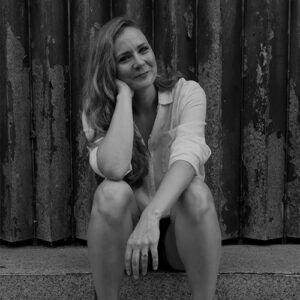
Life isn’t about waiting for the storm to pass, it’s about learning to dance in the rain.
I’m going to be honest.
I didn’t want to write anything this week.
I’m struggling.
I’m not managing to maintain the level of creative productivity that I had built in previous months. I’ve avoided writing the blog because my perceived lack of meaningful progress is making me feel negative, and I don’t want to put that into the world. I’ve been hit with a decent amount of writer’s block that has slowed progress on my novel. I’m on the verge of burnout with application writing. The lack of output is not making me feel good.
I didn’t want to write about this. Maybe because I didn’t want to acknowledge it. Maybe because I felt ashamed to admit it. Yesterday I read the About page of my website…I read why I started this project…I re-read all of my previous blogs and I smiled. My intention was to document my own journey back into creativity. To share some of my own anecdotal tales and experiences. To explore and develop my own practice by asking questions.
The remainder of this blog is not a story of overcoming the demons. It is not a heartwarming tale of defeating the beast. It is not a cry for help. It is a moment of reflection. A moment of sitting with the problem and examining it. Allowing it to be. Turning and facing it rather than continuing to run from it.
What are my biggest creative obstacles right now?
I have narrowed it down to two: Space and Time.
Rather than delve into Einstein’s theory of relativity…which would be a wonderful way to lose a few years…I want to examine these temporary roadblocks to my creativity.
I live in a four-roomed house (not four bedrooms – four rooms). I share this house with three other members of my family. There is a work from home order in place. Homeschooling is the current mode of education for the country. We are living under a travel restriction of no further than 5km from our home. It is winter. It rains 90% of the time.
I struggle to work with distractions. My writing first appears as a narrative in my head that is then transferred onto paper. I speak the words I write, I feel their shape in my mouth, I test words over and over until I find the most pleasurable fit for a sentence. This involves concentration free from distraction. Something as simple as a voice drifting in from another room draws my attention away and disrupts the flow of words. The worlds that I commit to paper appear in my mind, they are impacted by what I see, what I feel and what I hear. Often I will do non-creative work with the radio on. When I create, I cannot have any aural influence. My writing will turn dark or overly cheerful based on background music. My novel is supposed to follow a year’s worth of seasons, but is unintentionally stuck in winter because that is my lived reality.
Space is intrinsically intertwined with energy. Every place has its own rules, its own code of conduct, its own purpose. We go to these places and we behave in a way that is acceptable within them, when we leave we adopt the behavior of our transitional space, and upon arrival at the next place our behavior modifies again. We perform these spaces. When we see someone performing in a way that is not of that place, it draws our attention, it raises questions, it jars.
So how do we perform ‘work’ in a space dedicated to ‘sleep’? How do we condition ourselves to maintain productivity in a place reserved for relaxation? How do we force ourselves to ignore domestic distractions?
I listen to a lot of productivity podcasts. Podcasts aimed at people working in demanding jobs who need to prioritise and get the most out of their time. Over the years my working practice has improved based on some of the advice given in these podcasts.
One point that always stuck with me was structure. Blocking off time to carry out work without distraction. Seeing the value of fencing time to get ‘deep’ work done. Often this involves turning off alerts on emails or phones, closing your office door, generally becoming unavailable to others for a set period of time.
My husband and I have attempted to do this, tried to block out chunks of time to allow each other the time to carry out the work we need to do. But in a small house, in winter, with two children requiring attention, it is almost impossible to guarantee non-interrupted time. Ask any parent what happens when they lock the bathroom door and you will understand the predicament.
I have tried working in smaller, more realistic chunks of time. In the admin side of my job I use the pomodoro method of breaking work into 20 minute segments. This works really well in motivating me to retain focus on less exciting tasks. For creative work it is just too short. I experimented with writing a chapter in 20 minute chunks and the result was choppy and lacking continuity. I’ve found that 20 minutes is too short to edit, again the clarity and flow is lost by interrupting the work.
Recently I was on a call with a group of mothers working in the arts. One woman has multiple young children and was sharing her frustration about not being able to get any time to write (due to the age of her children). Other mothers told her that she was at the point when she had to accept not getting anything done. I could see the frustration on her face. That was not the answer she wanted. She wanted the secret formula, the way to do it that no-one had ever spoken about. My heart went out to her.
Having ideas take shape in your head, feeling them grow, wanting nothing more than to sit down and give them the space and time they need, but being unable due to circumstantial constraints, is frustrating and hard.
There was a part of me that imagined writing these things out would help me to see solutions that had been hidden. Unfortunately, like the woman with the young children, there is no silver bullet. Yes, there is an element of ‘this too shall pass’ that needs to be applied. There is the huge element of finding a more permanent, suitable accommodation (which is a complicated work in progress). There is a voice in my head that’s currently screaming ‘quit the moaning’.
But in stopping to look my demons in the eye, I clearly recognize my creative needs. By knowing what I need, I know the paths I need to find around the roadblocks. I don’t think it will be easy, and I’m sure there will be other roadblocks on these undiscovered paths, but at least I have somewhere to start.
Published in Collaboration with this creative nomad
Every “No” is One Step Closer to a “Yes”


this creative nomad is a blog and podcast by Aoife Carry. It is an exploration of creativity and the creative process. Aoife discusses her own creative practice in the blog posts, and the podcast is a series of interviews with entertainment professionals about their creative lives. Aoife is a circus director, show maker and writer. She has been working in entertainment since 2000, and has performed as an actress in classical theatre plays, written theatre shows, created early-years performances using circus, created unique spectacle performances and acts for private large-scale events and most recently was travelling the world as an Artistic Director for Cirque Du Soleil’s show Corteo. Aoife was based in Macau, S.A.R. for four years where she worked with Franco Dragone Entertainment on the show The House of Dancing Water, and then became part of the team that set up MGM’s first theatre in Asia. With Cirque Du Soleil she has toured Arena’s in the USA, Canada, and the majority of Europe. This came to a stop in early 2020 when the world ground to a halt. Aoife is currently based in Ireland and is creating new spectacle shows that draw on her diverse background and merge elements of theatrical storytelling, the intimacy of immersive performance and the scale of Spectacle.
Read Full Profile© 2021 TheatreArtLife. All rights reserved.

Thank you so much for reading, but you have now reached your free article limit for this month.
Our contributors are currently writing more articles for you to enjoy.
To keep reading, all you have to do is become a subscriber and then you can read unlimited articles anytime.
Your investment will help us continue to ignite connections across the globe in live entertainment and build this community for industry professionals.